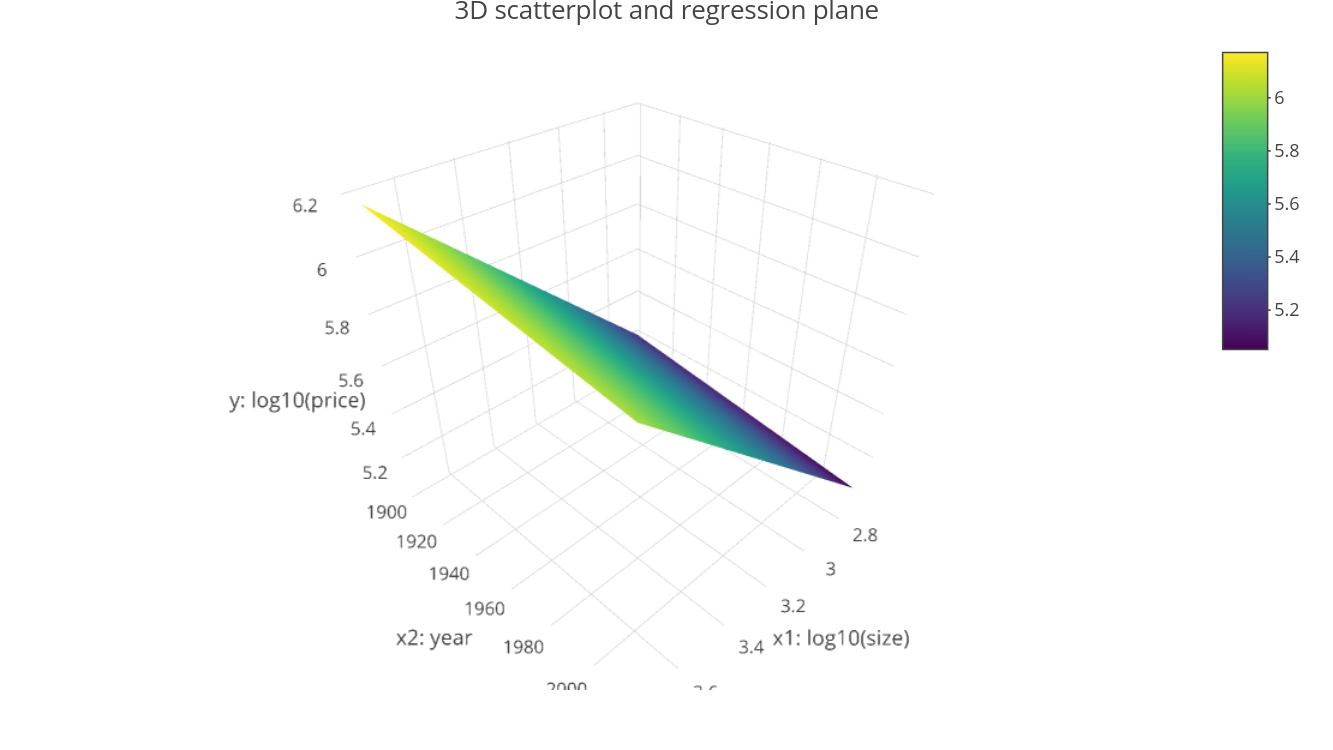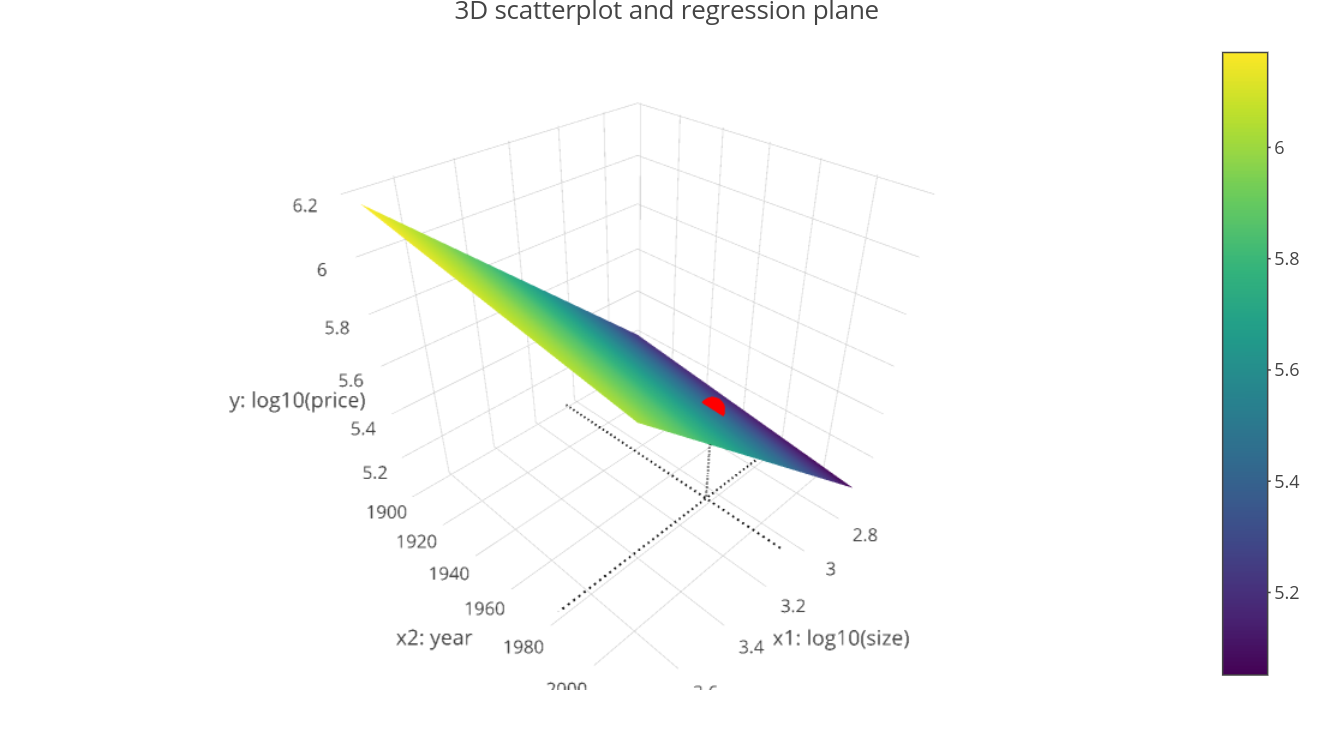Predicting house price using year & size
Modeling with Data in the Tidyverse

Albert Y. Kim
Assistant Professor of Statistical and Data Sciences
Refresher: regression plane

Regression plane for prediction

Predicted value
# Fit regression model using formula of form: y ~ x1 + x2 model_price_1 <- lm(log10_price ~ log10_size + yr_built, data = house_prices)# Output regression table get_regression_table(model_price_1)
# A tibble: 3 x 7
term estimate std_error statistic p_value lower_ci...
<chr> <dbl> <dbl> <dbl> <dbl> <dbl>...
1 intercept 5.38 0.0754 71.4 0 5.24...
2 log10_size 0.913 0.00647 141. 0 0.901...
3 yr_built -0.00138 0.00004 -33.8 0 -0.00146...
Predicted value
# Make prediction
5.38 + 0.913 * 3.07 - 0.00138 * 1980
5.45051
# Convert back to original untransformed units
10^(5.45051)
282169.5
Computing all predicted values and residuals
# Output point-by-point information
get_regression_points(model_price_1)
# A tibble: 21,613 x 6
ID log10_price log10_size yr_built log10_price_hat
<int> <dbl> <dbl> <dbl> <dbl>
1 1 5.35 3.07 1955 5.50
2 2 5.73 3.41 1951 5.81
3 3 5.26 2.89 1933 5.36
4 4 5.78 3.29 1965 5.69
5 5 5.71 3.22 1987 5.60
6 6 6.09 3.73 2001 6.04
7 7 5.41 3.23 1995 5.59
...
Best fit and residuals

Sum of squared residuals
# A tibble: 21,613 x 6
ID log10_price log10_size yr_built log10_price_hat
<int> <dbl> <dbl> <dbl> <dbl>
1 1 5.35 3.07 1955 5.50
2 2 5.73 3.41 1951 5.81
...
# Square all residuals and sum them
get_regression_points(model_price_1) %>%
mutate(sq_residuals = residual^2) %>%
summarize(sum_sq_residuals = sum(sq_residuals))
# A tibble: 1 x 1
sum_sq_residuals
<dbl>
1 585.
Let's practice!
Modeling with Data in the Tidyverse

